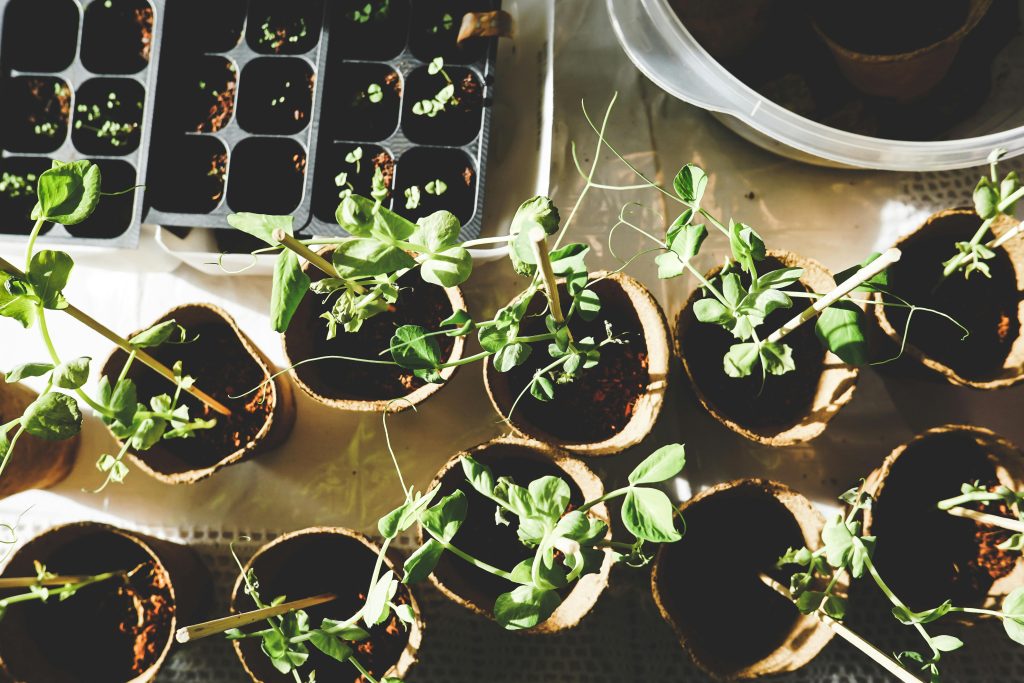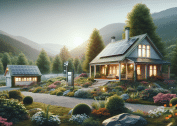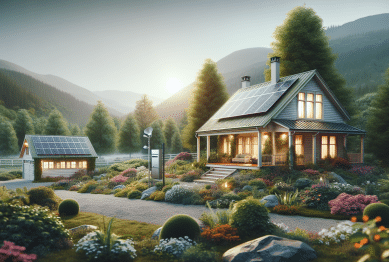As urban living continues to rise and outdoor spaces shrink, gardeners are turning to creative solutions to cultivate greenery in limited areas. In 2025, several innovative gardening ideas have emerged, focusing on maximizing space without compromising on beauty or functionality.

Vertical Gardening: Growing Upwards
Vertical gardening is a leading trend for compact spaces, allowing gardeners to grow plants upward instead of outward. This method is ideal for balconies, small patios, and urban backyards. Vertical structures such as living green walls, trellises, and tiered planters help maximize planting space while improving aesthetics and privacy.
Key Tips for Vertical Gardening:
- Choose the right plants: Herbs, leafy greens, strawberries, and trailing flowers work well vertically.
- Use modular systems: Stackable planters or wall-mounted pockets make it easy to expand your garden over time.
- Ensure proper irrigation: Drip systems or self-watering planters can help avoid water waste while keeping plants healthy.
Vertical gardening isn’t just about saving space; it can also improve air quality, reduce noise, and create a calming environment in urban homes.
Espaliered Fruit Trees: Fruitful and Space-Efficient
Espalier is an ancient technique where fruit trees are trained to grow flat against walls or fences. This approach is perfect for maximizing sunlight exposure and conserving horizontal space. Espaliered trees, such as apples, pears, and figs, not only produce more fruit per square foot but also serve as striking garden décor.
Tips for Successful Espalier:
- Start with young trees and gradually train branches along a wire frame.
- Regularly prune to maintain the desired shape and encourage fruiting.
- Choose a sunny location for optimal growth and ripening.
Espaliered trees are especially beneficial for small suburban gardens and urban environments where space is limited.
Container Gardening: Flexibility and Mobility
Container gardening is an increasingly popular solution for small spaces, providing flexibility and mobility for your plants. Pots, tubs, and even repurposed items like crates or baskets allow you to grow flowers, vegetables, and herbs anywhere—even on rooftops or balconies.
Container Gardening Strategies:
- Select the right containers: Ensure proper drainage to avoid waterlogging.
- Choose high-yield plants: Tomatoes, peppers, and dwarf fruit trees thrive in containers.
- Group plants wisely: Combine herbs with vegetables that share similar sunlight and watering needs.
Container gardening also enables easy relocation of plants, letting you move them according to seasonal light and temperature changes.
Urban Food Forests: Edible Ecosystems
Urban food forests are transforming unused city spaces into lush, edible ecosystems. They incorporate fruit trees, shrubs, herbs, and perennial vegetables to create self-sustaining gardens that provide fresh produce and habitat for pollinators.
Benefits of Food Forests:
- Increased biodiversity and improved soil health.
- Access to fresh, local produce and reduced grocery costs.
- Opportunities for community engagement and education.
Food forests are also part of a broader trend in sustainable urban development, offering ecological benefits in addition to space-efficient food production.
Smart Gardening: Technology Meets Horticulture
The rise of smart gardening has revolutionized how gardeners maximize limited space. Advanced tools such as automated irrigation systems, soil sensors, and plant-monitoring apps allow urban gardeners to optimize growth, save resources, and maintain healthier plants.
Key Smart Gardening Tools:
- Soil moisture sensors: Monitor soil hydration levels to prevent over or under-watering.
- App-based care reminders: Receive notifications about fertilization, pruning, and harvesting schedules.
- Indoor grow lights: Extend growing seasons and support plants in low-light conditions.
Smart gardening technologies are especially beneficial for busy city dwellers who want high productivity without intensive daily maintenance.
Homesteading in Suburbs: Turning Yards into Mini Farms
Suburban homesteading is gaining popularity as homeowners transform their yards into mini farms. These gardens often combine raised beds, vegetable plots, fruit trees, and even small livestock.
Advantages of Suburban Homesteading:
- Increased self-sufficiency and access to fresh food.
- Opportunity to recycle organic waste through composting.
- Educational experiences for children and families.
Careful planning is crucial to comply with local regulations and maximize yields. Strategic crop rotation and companion planting are often used to maintain soil fertility and reduce pests.
Balcony and Rooftop Gardens: Small Spaces with Big Impact
Balconies and rooftops are becoming key areas for urban gardening. Creative solutions, such as vertical trellises, raised planters, and container systems, allow homeowners to cultivate both decorative and edible plants.
Maximizing Balcony Space:
- Use tiered shelving for pots and planters.
- Select compact, dwarf plant varieties.
- Incorporate lightweight materials to avoid structural strain.
These gardens not only improve the aesthetics of apartments and buildings but also provide a personal retreat in busy city environments.
Budget-Friendly Gardening: Creative and Cost-Effective Solutions
Gardening on a budget is achievable with a little creativity. Many gardeners are repurposing household items, collecting rainwater, or growing plants from seeds to reduce costs.
Practical Tips:
- Use recycled containers for planters, such as tins, crates, and old furniture.
- Propagate plants from cuttings or seeds to save money.
- Choose low-maintenance, high-yield plants that require minimal inputs.
Budget-friendly gardening allows anyone to maximize space and creativity without heavy investments.
Indoor Microgreens and Hydroponics
Indoor gardening is another space-maximizing trend. Hydroponic systems and microgreen trays allow gardeners to grow nutritious plants indoors year-round. These methods are particularly useful for apartments or homes with limited outdoor space.
Advantages:
- Rapid growth and frequent harvest cycles.
- Minimal soil use and efficient water consumption.
- Access to fresh, nutrient-dense greens even in winter.
Hydroponics and microgreens are perfect for gardeners looking for compact, high-yield systems in limited living spaces.
Conclusion
Maximizing space in gardening is no longer just about squeezing plants into tight spots—it’s about innovation, creativity, and sustainable practices. From vertical gardens and espaliered fruit trees to smart technology and urban food forests, there are numerous ways to cultivate productive, beautiful gardens in limited spaces. By embracing these 2025 trends and implementing practical tips, gardeners can transform even the smallest areas into thriving green environments.
References
- Real Simple. “Gardening Trends 2025.” https://www.realsimple.com/gardening-trends-2025-11679097
- Permaculture Apartment. “The Future of Urban Gardening: 7 Trends to Watch in 2025.” https://www.permacultureapartment.com/post/the-future-of-urban-gardening-7-trends-to-watch-in-2025
- AP News. “Espaliered Fruit Trees: Space-Saving Gardening.” https://apnews.com/article/9be2bba54ce24ce66f9c0970dfd74ce6









